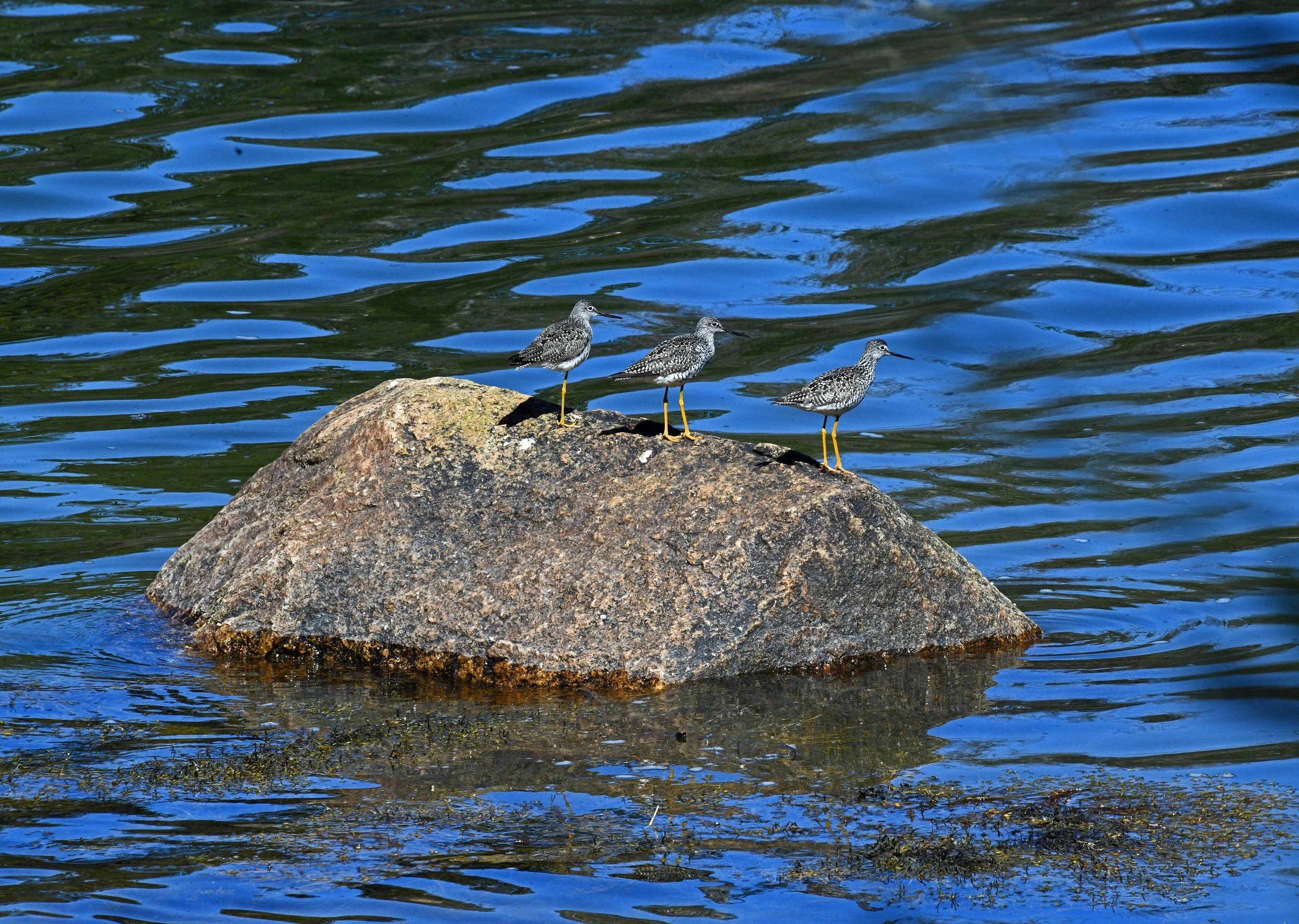Here’s one of our earliest migrators. He’s an irrepressible Eastern phoebe (Sayornes phoebe). And, as the saying almost goes, the early bird gets the bug. He’s one of a pair that I first saw last week. (Sex assumed for narration; only phoebes can tell their males from females and both sexes sing.)
Note that this little phoebe is all slimmed out and eager after just having caught his breakfast. (Is that a grub?) However, his nearby mate remained puffed up and kept a wary – but not alarmed – eye on me:
(It was cold, she apparently wasn’t ready to use up energy needlessly, and I was a good distance away with a 500mm lens. .)
These two are “flycatchers,” a group of birds that have the amazing ability to catch flying insects on the wing. Phoebes often sit upright on a twig and bob their tails while identifying themselves with a very raspy “FEEE-BEEE” song to make sure that we at least identify their species correctly. They’re not shy; they often build their nests on or near human residences and under bridges. (Images taken in Brooklin, Maine, on April 25, 2024.)








































